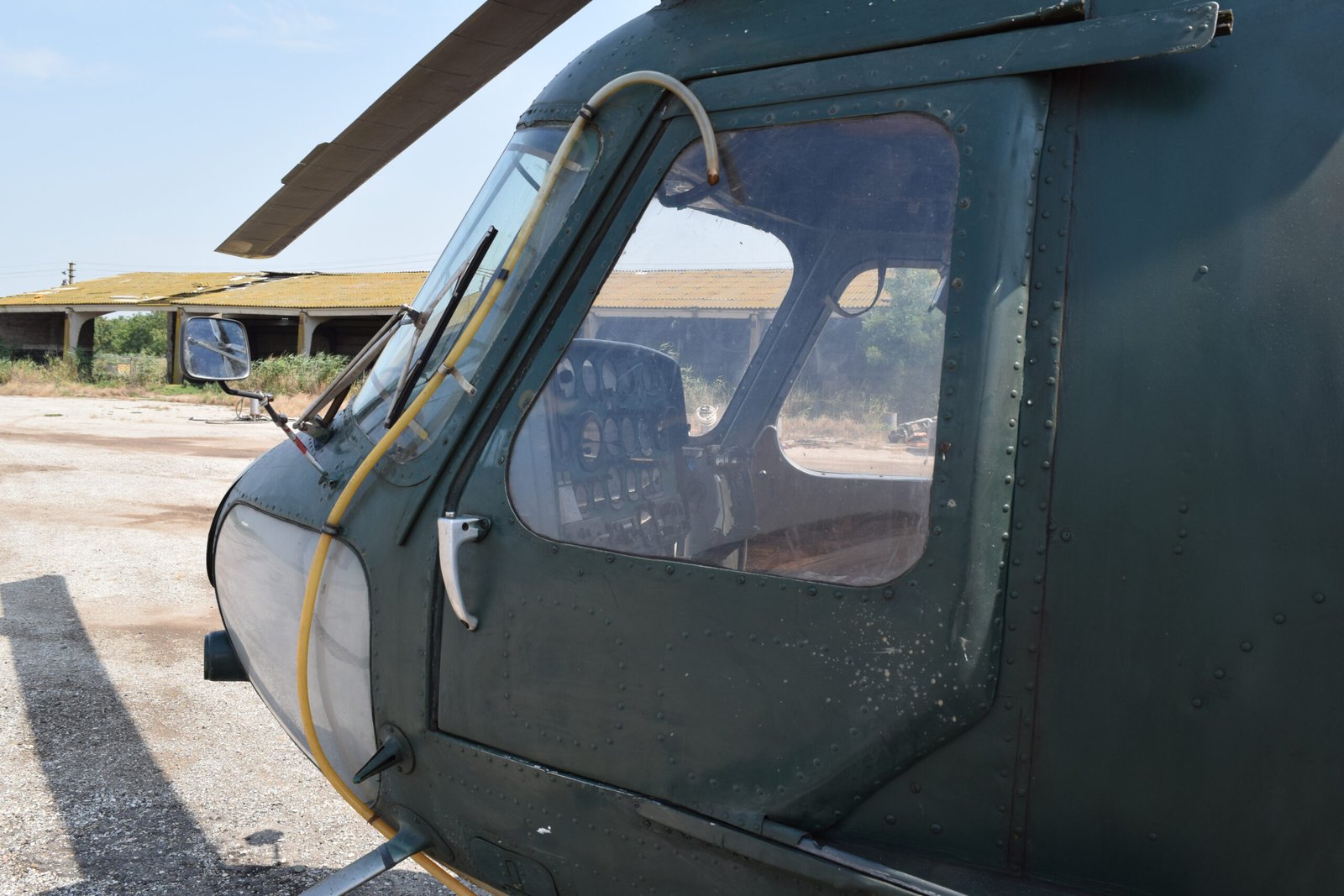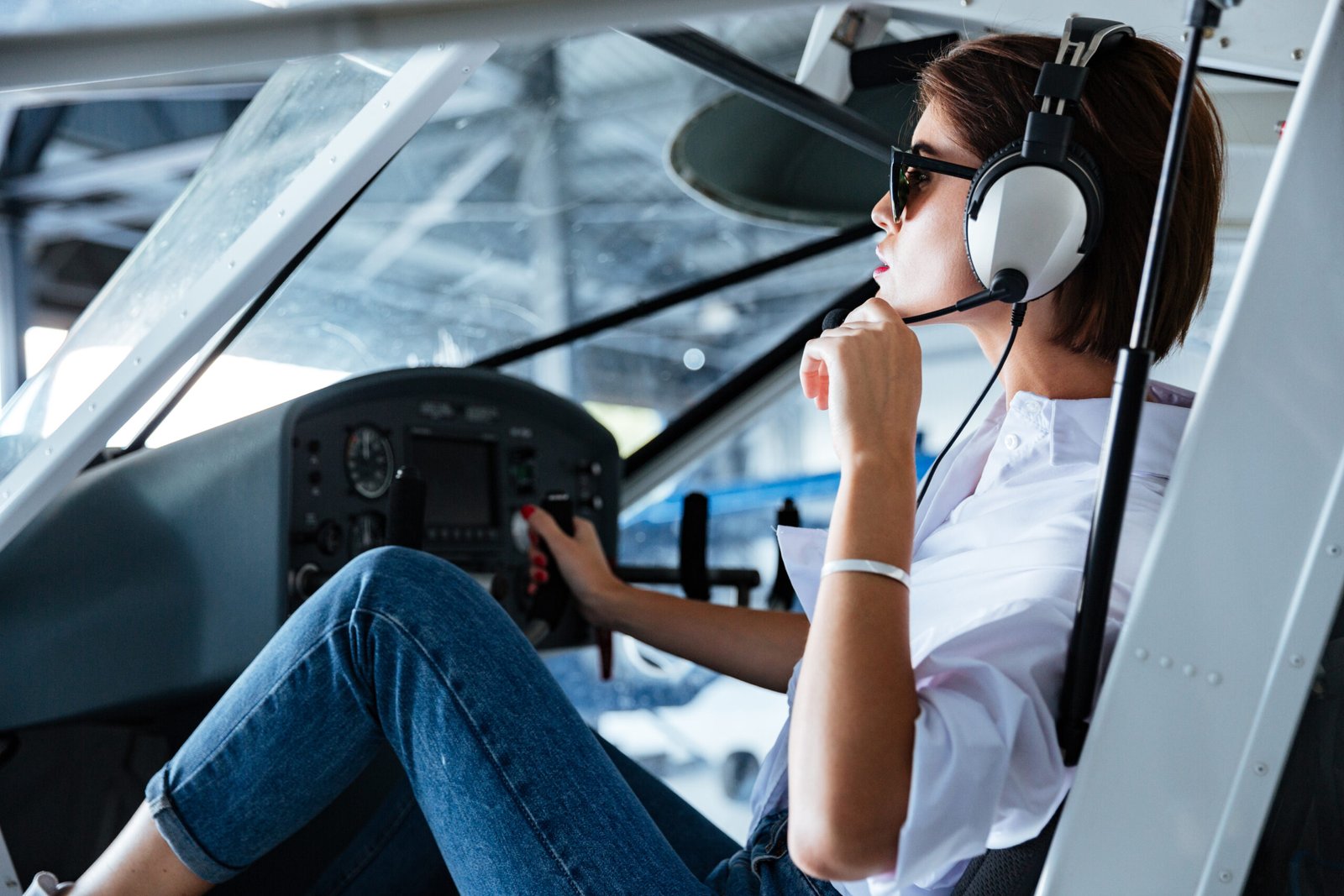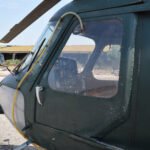Pilot Careers
Unlocking the Skies: The Impact of Drones on Modern Aviation
In recent years, the aviation sector has undergone a seismic shift, largely driven by advancements in technology. Among these innovations, drones have emerged as game-changers, revolutionizing not only how we think about flying but also how we train future pilots and aviation professionals. This post delves into various facets of modern aviation, highlighting the influence of drones and cutting-edge training methodologies.
Let’s begin with the pivotal role that technology plays in pilot training. Traditional flight schools have embraced simulators to enhance learning experiences. These sophisticated devices replicate real-world flying conditions, allowing aspiring pilots to practice maneuvers without leaving the ground. Simulators enable students to confront challenging scenarios—like inclement weather or equipment failures—in a safe environment, which is integral for building confidence and skill.

For those eager to explore more about aviation or enhance their knowledge, numerous blogs and websites serve as treasure troves of information. Here’s a shortlist of some must-follow resources:
1. **AirlineReporter.com** – Offers insights into airline news and travel tips.
2. **FlyingMag.com** – A comprehensive source for general aviation enthusiasts.
3. **AvWeb.com** – Provides continuous updates on industry trends.
4. **ThePilotReport.com** – Features pilot stories and aircraft reviews.
5. **FliteTest.com** – Focuses on the fun side of flying with DIY drone projects.
Social media platforms are also rich with content for aviation aficionados. Twitter accounts like @AviationWeek provide breaking news while Instagram accounts such as @PilotLife showcase stunning aerial photography paired with personal narratives from pilots around the globe.
For those who prefer structured learning environments, online aviation courses and ground schools are increasingly popular options. Websites like Udemy and Coursera offer specialized courses ranging from basic aerodynamics to advanced navigation techniques—all from the comfort of home! Ground schools prepare students for FAA tests, covering essential topics such as flight regulations and meteorology.
As drones gain traction in both commercial and recreational realms, they are opening up new career pathways within aviation. Industries ranging from agriculture to real estate now employ drone technology for aerial surveys and inspections, creating a demand for certified drone operators. The FAA has established guidelines that govern drone usage in airspace management; thus understanding these regulations is crucial for anyone looking to enter this field.
If you’re interested in pursuing a career as a pilot or drone operator, it’s wise to stay informed about job opportunities available through platforms like Indeed or LinkedIn where many airlines post openings regularly.
For regulatory insights, visit [FAA.gov](https://www.faa.gov), which provides extensive resources related to licensing requirements for pilots as well as guidance on operating drones safely within U.S airspace.
Embracing innovation is key in today’s fast-paced world of aviation where both manned aircraft and unmanned aerial vehicles (UAVs) coexist harmoniously. Drones not only facilitate new operational efficiencies but also inspire creativity across sectors—pushing boundaries previously thought impossible.
To conclude, unlocking the skies involves leveraging technological advances while fostering an engaged community through education—be it via traditional flight training supplemented by simulators or expanding knowledge through diverse online resources. As we continue navigating this transformative era in aviation history, one thing remains clear: embracing change will propel us all higher than ever before!
Green Skies Ahead: How Sustainable Practices Are Changing Air Travel
As the world grapples with climate change, the aviation industry is rising to the challenge by embracing sustainable practices that are reshaping air travel. With advancements in technology and training, the skies are set to become greener than ever.
One of the most significant developments in aviation is the integration of advanced technology into pilot training. Flight simulators have revolutionized how aspiring pilots learn. These sophisticated systems provide realistic environments that mimic various flying conditions without the environmental impact of traditional flight training. Pilots can practice emergency procedures or complex maneuvers in a controlled setting, ensuring they are well-prepared for real-world scenarios while minimizing their carbon footprint.
For those keen on keeping up with industry trends, there’s a wealth of information available online. Numerous aviation blogs and websites offer insights into sustainability efforts within the sector. Sites like AvWeb and Flying Magazine provide regular updates on innovations, regulatory changes, and environmental initiatives. Social media platforms such as LinkedIn and Twitter feature groups dedicated to sustainable aviation discussions, allowing enthusiasts to connect and share ideas about reducing emissions and enhancing efficiency.

Moreover, an array of online courses is now accessible for individuals interested in pursuing careers in aviation or expanding their knowledge base. Ground schools offer foundational education for both aspiring pilots and those working behind the scenes at airports or airlines. Platforms like Coursera and Udemy host comprehensive courses covering everything from aerodynamics to air traffic control fundamentals. Such educational resources play a crucial role in preparing future professionals who will be at the forefront of sustainability efforts.
The demand for skilled pilots continues to rise as air travel rebounds post-pandemic; however, prospective aviators must also be equipped with knowledge about green technologies. Airlines are increasingly looking for candidates who understand eco-friendly practices—be it operating fuel-efficient aircraft or employing strategies that reduce waste during flights.
In addition to traditional piloting roles, new opportunities are emerging within the realm of drones—a sector poised to transform logistics and delivery services while minimizing environmental impact. Drones can efficiently transport goods over short distances without contributing significantly to carbon emissions associated with conventional transportation methods. As regulations evolve, so too do job prospects in this exciting field.
For anyone involved in aviation or simply interested in its trajectory toward sustainability, staying updated on FAA regulations is imperative. The Federal Aviation Administration (FAA) has been actively promoting initiatives aimed at reducing greenhouse gas emissions through innovative technologies like sustainable aviation fuels (SAF). Their website provides valuable resources detailing guidelines for implementing these practices across various sectors of aviation.
In conclusion, as we navigate toward greener skies, it’s clear that innovation plays a pivotal role in shaping the future of air travel. From enhanced pilot training through simulators to embracing cutting-edge drone technology and staying informed via diverse online platforms—every aspect contributes towards making our skies cleaner and more sustainable than ever before. Embracing these changes not only benefits our planet but also opens up exciting avenues for professionals passionate about shaping an eco-conscious future in aviation!
Sky High: The Evolution of Aviation Technology and Its Future
Aviation has long captivated the human imagination, soaring through the skies and connecting distant corners of the globe. The journey from wood-and-canvas biplanes to today’s sleek jets is a testament to human ingenuity. As we look ahead, it becomes clear that technology will continue to shape how we fly, learn about aviation, and navigate the future of aerial transport.

### Aviation and Technology Training
One of the most remarkable advancements in aviation is the use of flight simulators for training pilots. These state-of-the-art devices offer a safe environment where aspiring aviators can experience various flight scenarios without ever leaving the ground. From turbulence to system failures, simulators provide invaluable hands-on experience while minimizing risks associated with real-life training flights. By incorporating virtual reality (VR) and augmented reality (AR), these training tools are becoming even more immersive, enhancing students’ learning experiences.
### Online Resources for Aviation Enthusiasts
The digital age has birthed a plethora of resources for aviation aficionados. Whether you’re a seasoned pilot or someone simply interested in flight mechanics, there are numerous blogs, websites, and social media platforms dedicated to this fascinating field. Here are some noteworthy mentions:
1. **Airliners.net** – A robust forum for aviation enthusiasts where you can share photos and experiences.
2. **The Points Guy** – Offers insights into maximizing frequent flyer miles while traveling.
3. **Fly Away Simulation** – A hub for flight simulation enthusiasts featuring news on software updates.
4. **Pilot’s Digest** – Covers everything from industry news to tips for aspiring pilots.
5. **Social Media Groups** – Platforms like Facebook have numerous groups such as “Aviation Enthusiasts” where members share stories, news articles, and personal experiences.
These online communities serve as an amazing source of information and inspiration.
### Learning Opportunities: Online Courses & Ground Schools
For those looking to embark on a career in aviation or simply expand their knowledge base, several online courses and ground schools are available today. Organizations like Coursera and Udemy offer comprehensive classes covering topics from aerodynamics to air traffic control procedures. Moreover, institutions like Embry-Riddle Aeronautical University provide specialized programs tailored for both new pilots and industry professionals seeking certification or advancement in their careers.
With remote learning now more accessible than ever, aspiring pilots can balance education with other commitments without compromising quality.
### Career Pathways: Becoming a Pilot

Pursuing a career as a pilot is an exciting prospect that requires dedication and skill development. After completing appropriate training programs—including Private Pilot License (PPL) or Airline Transport Pilot License (ATPL)—the next step often involves accumulating flight hours through various jobs such as flight instructing or flying charters before landing positions with airlines or cargo companies.
The demand for qualified pilots continues to grow globally—an encouraging sign for those considering this profession!
### The Rise of Drones
In recent years, drones have transformed not only recreational flying but also commercial applications within aviation sectors such as delivery services, agriculture monitoring, and surveillance operations. As regulations evolve—thanks largely to guidance from organizations like the FAA—the drone industry is expected to expand exponentially in various sectors while ensuring safety remains paramount.
#### Final Thoughts
As we gaze into the horizon of aviation technology‘s future landscape feels promising yet unpredictable; however one thing remains certain—the blend between innovation-driven solutions alongside traditional methodologies will define how we navigate our skies moving forward! For anyone passionate about flight—whether through piloting aircraft themselves or embracing technological advances—a world full of opportunities awaits!
Unmasking the Mysteries of Flight: How Airplanes Really Work
Aviation has long captivated our imaginations, from the first daring flights of the Wright brothers to today’s colossal jetliners soaring through the skies. But have you ever wondered how these marvels of engineering actually work? Beyond the awe-inspiring takeoffs and landings lies a world rich with knowledge that can be explored through various avenues, such as online aviation courses, ground schools, and vibrant aviation communities.
For those eager to dive deeper into the mechanics of flight, online aviation courses are an excellent starting point. These courses cover everything from fundamental aerodynamics to advanced navigation techniques. They cater not only to aspiring pilots but also to enthusiasts looking to understand the intricacies of aircraft systems. Platforms like Coursera and Udemy offer structured learning paths led by industry professionals who share their insights and experiences. Through interactive modules and video lectures, students can gain a solid grounding in aviation principles at their own pace.
Ground schools serve as another invaluable resource on this journey toward becoming a pilot or simply understanding aviation better. These schools often provide both classroom instruction and practical training in flight simulators. Whether in-person or virtual, ground school programs cover essential topics such as weather conditions, regulations, and emergency procedures—knowledge crucial for every aviator. Enrolling in a reputable ground school not only fosters technical skills but also instills confidence in navigating complex flying scenarios.

With proper education comes opportunity! The realm of aviation offers diverse career paths for those passionate about flying. Becoming a pilot is perhaps one of the most sought-after professions; however, it’s worth noting that there are numerous roles within this industry—from air traffic controllers to maintenance technicians and flight engineers. As commercial air travel continues to expand globally, so does the demand for qualified personnel across various sectors within aviation.
Engaging with fellow enthusiasts can significantly enhance your understanding of flight mechanics too! Aviation forums and communities like PPRuNe (Professional Pilots Rumour Network) or AvGeek groups on Reddit serve as platforms where individuals share experiences, insights, tips, and advice about all things airborne. These forums create a sense of camaraderie among pilots and hobbyists alike—offering support during training or sharing stories from thrilling flights around the world.
If you’re seeking even more resources to fuel your passion for aviation, numerous blogs and websites provide endless information on current events within the field alongside technical knowledge. Some popular blogs include “AirlineReporter,” which covers airline industry news with an engaging twist; “The Flying Engineer,” focusing on engineering aspects; or “Flight Chic,” which explores fashion within air travel culture.
Social media platforms also play a pivotal role in connecting aviators globally. On Instagram alone, hashtags like #AvGeek or #PilotLife showcase stunning photographs from cockpit views to breathtaking aerial shots that inspire wanderlust among followers. Twitter is another great avenue for real-time updates from industry experts while YouTube channels dedicated to aviation documentaries offer visually captivating narratives that unravel complex concepts behind aircraft functionality.
In conclusion, whether you’re dreaming of becoming a pilot or simply intrigued by what makes airplanes soar through clouds effortlessly—there’s no shortage of resources available today! From online courses that educate aspiring aviators to interactive forums fostering community engagement, each aspect unravels layers upon layers of knowledge waiting for exploration in this fascinating domain called aviation!



